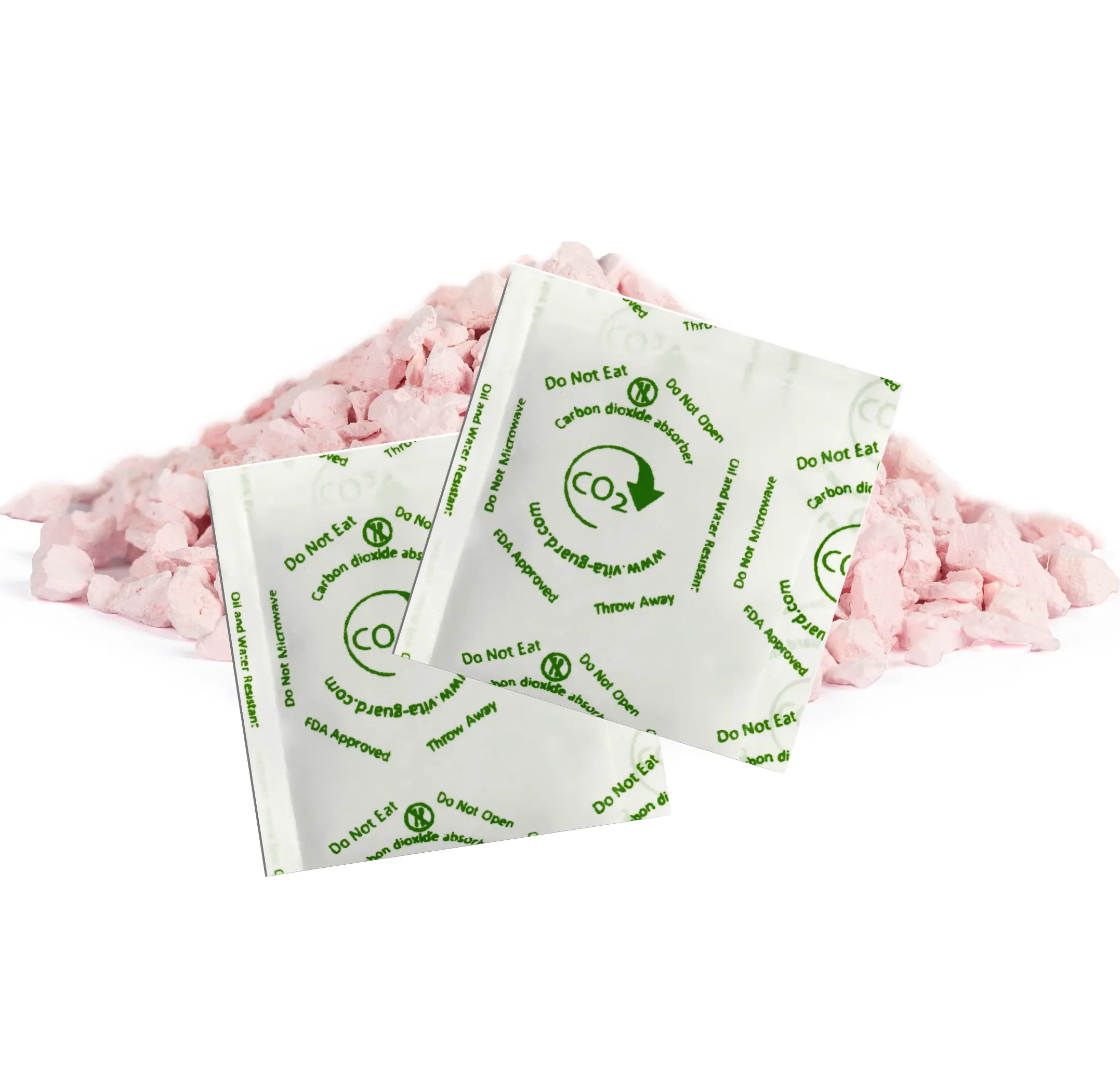PRODUCT
Keeping Fruits Fresh as the day one

Carbon Dioxide Absorbent Sachet
Processing plants, exporters, sorting operators, and household consumers of peeled and sliced fruits, leafy vegetables, and fresh processed vegetables are always faced with the problem of color change, browning, unpleasant odor, sour taste, or softening of the product texture during packaging, storage, and use. The high levels of carbon dioxide (CO2) produced by these products during the fermentation process are the main cause of such problems. Additionally, the high volume of carbon dioxide in packaging may lead to bloating, cracking, and damage to the packaging body.
Our Company, by utilizing atmosphere modification technology and optimal absorption of carbon dioxide in packaging, has produced a CO2 gas absorbent sachet that increases the shelf life, sometimes up to several months, and preserves the freshness and nutritional value of the products until consumption. This product is known in the global market as a CO2 absorbent and is offered to customers in sachet form in various dimensions and weights for easier use.
Product Features
• Easy to use
• Can be disposed of as regular waste
• No undesirable side effects on products
• Effective performance in the temperature range of 0-25 degrees Celsius and at ambient pressure (1 atmosphere)
• Use of packaging resistant to water, oil, dust, and dirt
product | amount | absorption |
250≤ | Types of fresh cut fruits, vegetables, and produce | 1sachet of 5 grams for packages weighing 500 grams to 1 kilogram. |
The amount of carbon dioxide absorption (g/mL) | Size(cm) | Weight(gr) |
250≤ | 4.5*7 | 5 |
5*7 | 7 | |
6*7.5 | 10 | |
7*10 | 20 | |
8*11 | 30 | |
8*12 | 40 | |
9*12.5 | 50 |

 Usage
Usage
• Fresh packaged vegetables: including various types of leafy greens, mixed salads, spinach, cabbage, coriander, kale, arugula, parsley, celery, spring onions, tarragon, mustard greens, broccoli robe, kohlrabi, romaine lettuce, Swiss chard, basil, ginger, and baby's breath.
• Salted preserved vegetables: including cabbage, kale, celery, and pickles.
• Fresh packaged fruits (sliced or whole): such as strawberries, pears, apples, cucumbers, grapes, bananas, plums, cherries, and dried pistachios.
• Fresh root vegetables: garlic (cloves or stems), eggplant, lemon, butternut squash, potatoes, and potato derivatives such as peeled potatoes and sweet potatoes.
• Fresh cut flowers: including various types of fresh flower bouquets.
The recommended number of sachets for different products is as follows. It is important to note that all products, especially fruits, vegetables, and fresh produce, must be free from damage, bruising, and any mold or mildew before packaging. The appropriate number of sachets should be placed in the packaging of the desired product without opening the sachet in the upper space.
 Product benefits
Product benefits
• Preservation of freshness
• Reduction of product losses and damage
• Increase in shelf life
• Prevention of bloating and changes in packaging appearance
• Prevention of color change, browning, softening, and spoilage of the texture
• Prevention of the development of unpleasant odors even during long-term storage
Safety Precautions
• Keep out of reach of children.
• Not for consumption.
• Not reusable.
• Do not open.
• In case of any incident, refer to the product's Material Safety Data Sheet (MSDS).
